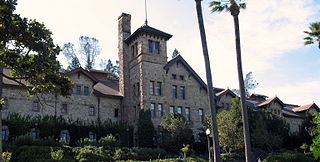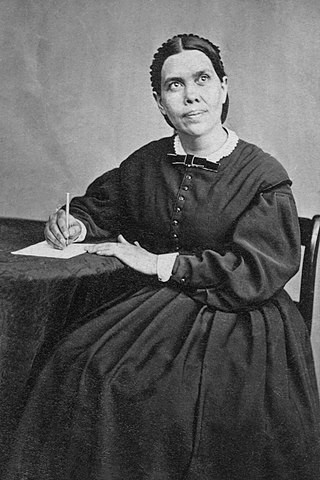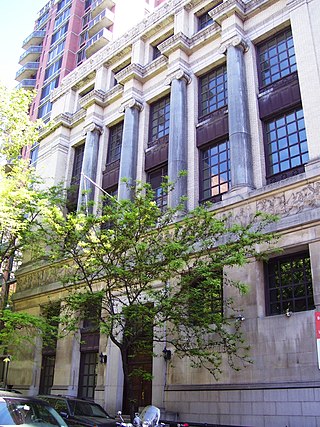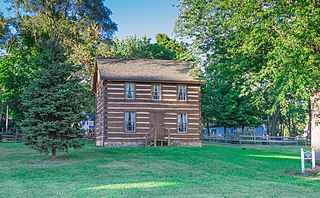
The Seventh-day Adventist Church (SDA) is an Adventist Protestant Christian denomination which is distinguished by its observance of Saturday, the seventh day of the week in the Christian (Gregorian) and the Hebrew calendar, as the Sabbath, its emphasis on the imminent Second Coming (advent) of Jesus Christ, and its annihilationist soteriology. The denomination grew out of the Millerite movement in the United States during the mid-19th century and it was formally established in 1863. Among its co-founders was Ellen G. White, whose extensive writings are still held in high regard by the church.

St. Helena is a city in Napa County, California, United States. Located in the North Bay region of the San Francisco Bay Area, the population was 5,438 at the 2020 census.

Ellen Gould White was an American author and co-founder of the Seventh-day Adventist Church. Along with other Adventist leaders such as Joseph Bates and her husband James White, she was instrumental within a small group of early Adventists who formed what became known as the Seventh-day Adventist Church. White is considered a leading figure in American vegetarian history. Smithsonian named her among the "100 Most Significant Americans of All Time".

Eisenhower National Historic Site preserves the home and farm of Dwight D. Eisenhower, the 34th president of the United States, and its surrounding property of 690.5 acres (279.4 ha). It is located in Cumberland Township, Adams County, Pennsylvania, just outside Gettysburg. Purchased by then-General Eisenhower and his wife Mamie in 1950, the farm served as a weekend retreat for the President and a meeting place for world leaders, and became the Eisenhowers' home after they left the White House in 1961.

The Johnston–Felton–Hay House, often abbreviated Hay House, is a historic residence at 934 Georgia Avenue in Macon, Georgia. Built between 1855 and 1859 by William Butler Johnston and his wife Anne Tracy Johnston in the Italian Renaissance Revival style, the house has been called the "Palace of the South." The mansion sits atop Coleman Hill on Georgia Avenue in downtown Macon, near the Walter F. George School of Law, part of Mercer University. It was designated a National Historic Landmark in 1973 for its architectural uniqueness.

St. Michael's Church is a historic Episcopal church at 225 West 99th Street and Amsterdam Avenue on Manhattan's Upper West Side in New York City. The parish was founded on the present site in January 1807, at that time in the rural Bloomingdale District. The present limestone Romanesque building, the third on the site, was built in 1890–91 to designs by Robert W. Gibson and added to the National Register of Historic Places in 1996.
Most Seventh-day Adventists believe church co-founder Ellen G. White (1827–1915) was inspired by God as a prophet, today understood as a manifestation of the New Testament "gift of prophecy," as described in the official beliefs of the church. Her works are officially considered to hold a secondary role to the Bible, but in practice there is wide variation among Adventists as to exactly how much authority should be attributed to her writings. With understanding she claimed was received in visions, White made administrative decisions and gave personal messages of encouragement or rebuke to church members. Seventh-day Adventists believe that only the Bible is sufficient for forming doctrines and beliefs, a position Ellen White supported by statements inclusive of, "the Bible, and the Bible alone, is our rule of faith".

John Allen Burden (1862–1942) was an American Seventh-day Adventist minister, administrator, and medical missionary instrumental in founding sanitariums, restaurants, and health food factories. At the age of 9, John attended Adventist meetings for the first time and was introduced to the writings of Ellen G. White, which left a lifelong impression upon him. Five years later he was baptized, and at the age of 18 (1880) moved with his family to Oregon. John met Eleanor A. Baxter (1865–1933) as a student at Healdsburg College. They were married in 1888 while working for the Rural Health Retreat, of which John became manager in 1891.
Arthur Lacey White (1907–1991) was an American Seventh-day Adventist writer, and theology professor, noted for his service to the Ellen G. White Estate.

William Clarence "Willie" White was a son of Ellen G. White and James Springer White, two of the founders of the Seventh-day Adventist Church. He became a well-known Seventh-day Adventist minister and church leader. W.C.'s son Arthur L. White worked closely with him and succeeded his father as Secretary of the White Estate.

The New York School of Applied Design for Women, established in 1892 by Ellen Dunlap Hopkins, was an early design school for women in New York City. The 1908 New York School of Applied Design building was designed by Harvey Wiley Corbett and is now landmarked.

The Stephen Tyng Mather Home is a historic house and National Historic Landmark at 19 Stephen Mather Road in Darien, Connecticut. It is significant as the longtime family home Stephen Tyng Mather (1867–1930), an industrialist and conservationist who championed the creation of the National Park Service in 1916 and served as its first director. The main house was built in 1778 by his great grandfather, Deacon Mather. Stephen Mather often lived elsewhere, but regarded this house as his true home.

Modjeska House, also known as Arden, is a house designed by Stanford White in Modjeska Canyon, California. It is significant for being the only surviving home of Helena Modjeska, a Shakespearean actress and Polish patriot. The property is located in a live oak grove on the banks of Santiago Creek in Modjeska Canyon, California.
Frogmore is an unincorporated community on St. Helena Island in Beaufort County, South Carolina, United States, along U.S. Route 21.

The National Park System preserves and interprets the history of women in American society. Many national parks, monuments and historic sites represent America's women's history as a primary theme, while numerous others address American women's history somewhere in their programs and preservation activities. The lists of sites below is not exhaustive, but includes sites closely related to themes in U.S. Women's History. Click here for an article on Women in the National Park Service.

This is a list of the National Register of Historic Places listings in Olmsted County, Minnesota. It is intended to be a complete list of the properties and districts on the National Register of Historic Places in Olmsted County, Minnesota, United States. The locations of National Register properties and districts for which the latitude and longitude coordinates are included below, may be seen in an online map.

Hanson Place Seventh-day Adventist Church, is an historic church at 88 Hanson Place between South Oxford Street and South Portland Avenue in the Fort Greene neighborhood of Brooklyn, New York City, which was built in 1857-60 as the Hanson Place Baptist Church. It was designed by George Penchard in the Early Romanesque Revival style. The building, which is constructed of brick on a brick foundation covered in stucco, features an entrance portico topped by a steeply pitched pediment supported by four Corinthian columns, while the side facade on South Portland features pilasters. The building's interior and exterior were restored in the 1970s. It has been a Seventh-day Adventist church since 1963.

The Advent Historic District is a residential historic district, roughly bounded by North Washington Avenue, Champion Street, Hubbard Street, and Greenwood Avenue, in Battle Creek, Michigan. The district encompasses the heart of the former village of Washington Heights, which was developed as a by-product of the growth of the Seventh-day Adventist Church in the area during the last half of the nineteenth and the early part of the twentieth. The area was annexed into Battle Creek in 1926. It was listed on the National Register of Historic Places in 1994.

The Glass Fire was a wildfire in Northern California, that started on September 27, 2020, at 3:48 AM (PDT) from an undetermined cause and was active for 23 days. It was part of the 2020 California Wildfires and the 2020 Western United States wildfire season. The fire was named due to its origin nearby Glass Mountain Road in Deer Park, Napa County, and it extended also into Sonoma County. Initially a single 20-acre brush fire, it rapidly grew and merged with two smaller fires that expanded to 11,000 acres during the night of September 27 into September 28.

St. Mary of the Assumption Church is a parish of the Roman Catholic Church located at Laurin, Madison County, Montana, United States, in the Diocese of Helena. It is noted for its historic parish church.




















